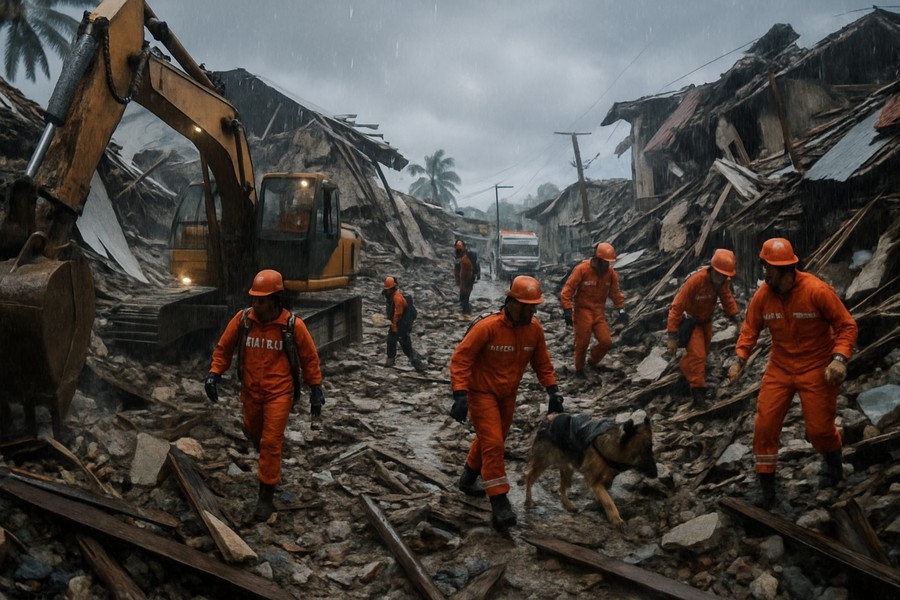
Devastating Earthquake Claims Dozens of Lives in the Philippines
The central region of the Philippines has been rocked by a disastrous earthquake, claiming the lives of at least 69 individuals. In the aftermath, rescuers are tirelessly using every resource available, including heavy machinery and specially trained dogs, to find survivors amidst the wreckage of fallen buildings and homes.
The number of fatalities is expected to increase as the full impact of this 6.9-magnitude earthquake is realized. The most severe damage occurred in the city of Bogo and surrounding rural towns in the Cebu province. The earthquake struck late at night, trapping many residents under debris and rubble.
Challenging Search and Rescue Operations
Efforts to rescue trapped survivors are being hampered by difficult conditions such as sporadic rainfall and damaged infrastructure like bridges and roads. However, rescue teams remain optimistic. "We're still in the prime time for our search and rescue," a deputy administrator of the Office of Civil Defense commented. "We've received numerous reports of individuals trapped or struck by debris.”
The earthquake's epicenter, triggered by the movement of an undersea fault line at a perilously shallow depth of 5 kilometers (roughly 3 miles), was located approximately 19 kilometers (around 12 miles) northeast of Bogo. This coastal city, home to about 90,000 residents, reported about half of the total deaths.
International Support and Ongoing Response
The Philippine government is currently evaluating whether to request aid from foreign nations, based on the results of rapid damage assessments. Expressions of condolences have been received from multiple countries including the United States, Japan, Australia, and the European Union. "We are prepared to assist the Philippine government's response as friends, partners, and allies," commented the U.S. ambassador to the Philippines.
Efforts are underway to transport a backhoe to expedite search and rescue operations in a mountain village devastated by a landslide and falling boulders. However, the task is proving difficult due to the hazardous conditions in the area. In spite of these challenges, some survivors have been transported to a hospital from the affected village.
Additional Fatalities and Ongoing Aftershocks
Deaths have also been reported in the nearby towns of Medellin and San Remigio. Among the victims were three coast guard personnel, a firefighter, and a child, who were killed by collapsing walls and falling debris while trying to escape to safety from a sports complex.
This earthquake was one of the most potent to hit the central region in over a decade, striking when many were asleep or at home. A tsunami warning was briefly issued, advising residents to stay away from the coastlines due to potential waves of up to 1 meter (3 feet). Although no such waves were reported and the warning was lifted a few hours later, many traumatized residents chose to stay in open fields and parks overnight, despite the intermittent rains.
Recovery Efforts Amidst Ongoing Disasters
The region was already grappling with the aftermath of a tropical storm that left at least 27 people dead, caused massive power outages and forced the evacuation of tens of thousands of people. Schools and government offices in the quake-hit areas remain closed while the safety of buildings is assessed. More than 600 aftershocks have been detected following the earthquake, making the recovery efforts even more challenging.
The Philippines, being one of the world's most disaster-prone countries, frequently experiences earthquakes and volcanic eruptions due to its location on the Pacific "Ring of Fire," a zone of high seismic and volcanic activity. The country also faces about 20 typhoons and storms each year, making it a constant battle against nature's wrath.
